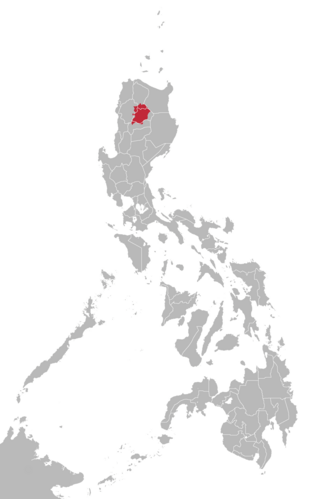Most languages of Europe belong to the Indo-European language family. Out of a total European population of 744 million as of 2018, some 94% are native speakers of an Indo-European language. Within Indo-European, the three largest phyla in Europe are Romance, Germanic, and Slavic; they have more than 200 million speakers each and together account for close to 90% of Europeans. Smaller phyla of Indo-European found in Europe include Hellenic, Baltic, Albanian, Celtic, and Armenian ; Indo-Aryan, though a large subfamily of Indo-European, has a relatively small number of speakers in Europe.

Sankhuwasabha District is one of 14 districts of Province No. 1 of eastern Nepal. The district's area is 3,480 km2 with a population of 159,203 in 2001 and 158,742 in 2011. The administrative center is Khandbari.
Magar Dhut is a Sino-Tibetan Language spoken mainly in Nepal, Southern Bhutan, and in Darjeeling and Sikkim, India, by the Magar people. It is divided into two groups and further dialect divisions give distinct tribal identity. In Nepal 788,530 people speak the language.

Kalinga is a dialect continuum of Kalinga Province in the Philippines, spoken by the Kalinga people, alongside Ilocano. The Banao Itneg variety is not one of the neighboring Itneg languages.

Bontoc (Bontok) is the native language of the indigenous Bontoc people of the Mountain Province, in the northern part of the Philippines.
Yamphu language is a Kirati language spoken by the Kirat Yamphu people, a Kirati people of the Himalayas of Nepal. Tomyang (Chongka) is a recently discovered dialect spoken by only 20 people. Both it and Yamphe are distinct. Southern Yamphu is also considered to be Southern Kirat Lorung language. These varieties are all closely related.
Sisaala (Sissala) is a Gur language cluster spoken in northern Ghana near the town of Tumu and in the neighbouring republic of Burkina Faso. Western Sisaala is intermediate between Sisaali and Tumulung Sisaala.
Kulung is one of the Rai languages; it is spoken by an estimated 33,000 people. Van Driem (2001) includes Chukwa as a dialect.
Sampang language is a subgroup of Central Kiranti languages.
Musasa an Indo-Aryan language of Nepal. It belongs to the Bihari group and is spoken in the Janakpur, Kosi and Sagarmatha zones. It is predominantly spoken by members of the Musahar caste.
One is a Torricelli dialect cluster of West Wapei Rural LLG in Sandaun Province, Papua New Guinea.
Karenni or Red Karen, known in Burmese as Kayah, is a Karen dialect continuum spoken by over half a million Kayah people in Burma.
Nisu is a language cluster spoken by half a million Yi people of China. It is one of six Yi languages recognized by the government of China. The Yi script was traditionally used, though few can still read it. According to Lama (2012), Nisu (Nishu) autonyms include, , and.
Guiyang Miao, also known as Guiyang Hmong, is a Miao language of China. It is named after Guiyang County, Guizhou, though not all varieties are spoken there. The endonym is Hmong, a name it shares with the Hmong language.
Jerung or Jero is a moribund Kiranti language spoken in Nepal. The native language consultants whom Opgenort (2005) consulted, preferred the term ‘Jero’ to designate the language. The term ‘Jerung’, by contrast, is a toponym used in the names of several villages within the language area as well as the name of a village in the Wambule-speaking area. The Jerung language is mutually intelligible with Wambule. Jerung is spoken by more than 2,000 people living in Okhalḍhuṅgā and Sindhulī districts of eastern Nepal. Gerd Hanßon (1991) claims that there are three to four dialects of Jerung: Madhavpur, Balkhu-Sisneri, and Ratnawati (Sindhuli). However, according to Opgenort's (2005) consultants, there are only two major dialects: a northern dialect, which is spoken in Okhaldhunga District (ओखलढुङ्गा), and a southern dialect, which is spoken in Sindhuli District (सिनधुली).
Saam, Saama Kha, is a nearly extinct Kiranti language spoken in Nepal. The name Saam is ambiguous, and shared with neighboring languages.
Dungmali, or Dungmali-Bantawa, is a Kirati languages language spoken in Nepal. It is largely cognate with Bantawa language, but differs grammatically and phonologically.
Mewahang (Meohang), or Newahang, is a Kiranti language spoken in Nepal. The eastern and western dialects are structurally distinct.
Ghale is a Tibeto-Burman language of Nepal. It belongs to the group of Ghale languages. The dialects of Ghale have limited intelligibility: (south) Barpak, Kyaura, Laprak, (north) Khorla, Uiya, Jagat, Philim, Nyak
Atta is an Austronesian dialect cluster spoken by the Aeta (Agta) Negritos of the northern Philippines.



